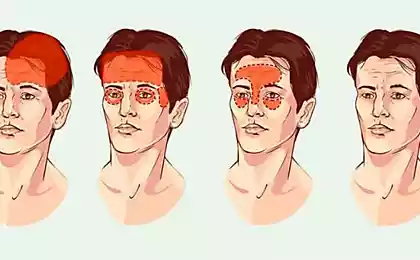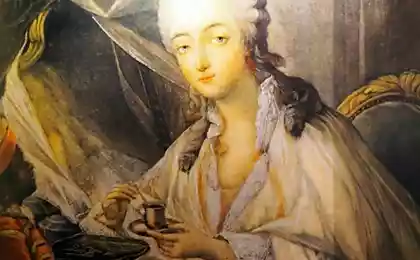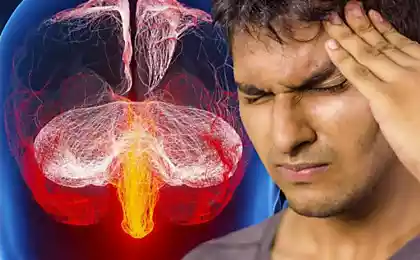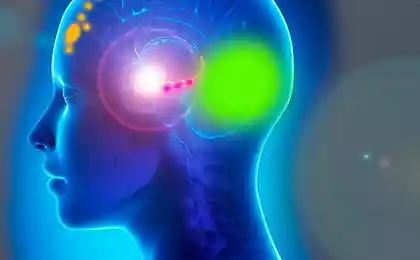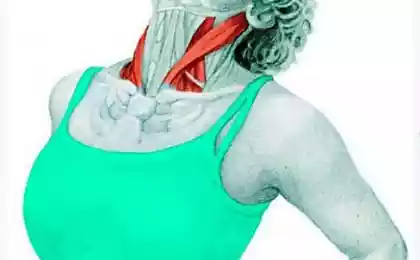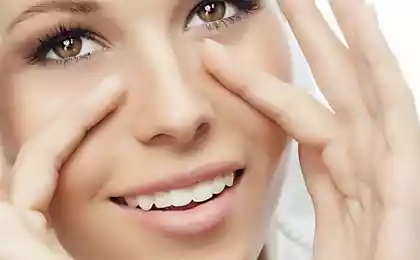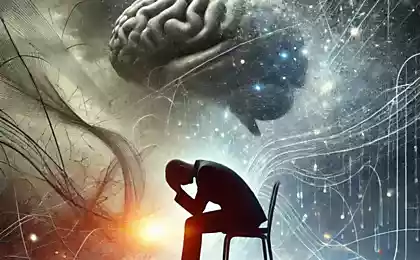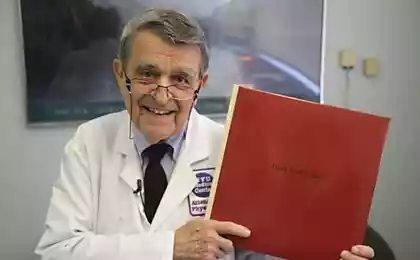779
Vascular gymnastics for the treatment of headaches and hypertension
To eliminate headaches developed vascular gymnastics, which includes special exercises for the cervical spine and relaxation of the muscles of the neck.
The following techniques will help you:

You must understand that because the holes of the lateral processes of the vertebrae are the cervical vertebral arteries supply posterior brain, with a sharp and sloppy turning the neck there is the possibility of damage.
In the upper part of the neck is the medulla oblongata responsible for breathing and heart activity, so any action on the first and second cervical vertebrae should be as gentle.
So all the exercises, employing the cervical spine, it is necessary to smoothly and slowly, in any case, not forcing the pace, with the maximum caution and care.
In fact, the proposed exercises will help you to get rid of the root cause of headaches, dizziness, high blood pressure, namely from the functional biomechanical disorders in the upper spine.

I must say that more than half of the cases of persistent and severe headache occurs in various disorders of the cervical spine. The symptoms of cervical headaches are the result of irritation of the sympathetic the spinal nerve which often leads to sharp pain in the right or left side of the head.
I want to note that nerve fibers from the second cervical vertebra go straight to the brain stem that leads to the occurrence of cardiovascular disorders on the background of the headaches "cervical" character. So the treatment for this type of headache is the treatment and prevention of cardiovascular disorders.
Before proceeding to vascular gymnastics of the upper spine, I suggest you to determine the strength of the blood flow in the vertebral arteries.

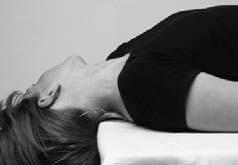
If during this exercise you experience a headache, you feel dizzy, appeared "floaters" or spots before the eyes, it means that there is obstruction of blood flow in vertebral arteries. In this case, I do not advise you to do exercises on the upper spine. You can use the exercises for muscle relaxation.
I want to draw your attention that in case of any discomfort, whether it is neck pain, headache, dizziness, or the appearance of spots before eyes, exercise should cease immediately, because these sensations may indicate tissue damage of the cervical spine or of violations of blood flow in the vertebral arteries.
However, you should not finish abruptly, otherwise it will cause reflex spasm of the neck muscles and may worsen the condition.
When the complaints must gradually, within 3-5 seconds to reduce the tensile stress on the neck, gradually reducing it to zero.
The most simple and universal method of influence on the cervical spine are stretching and rhythmic movements.
Their benefits consist of two components:
1) simple technique, not requiring extensive training;
2) the performance of this type of exercises: they allow you to get the results after conducting 3-4 treatments.
The effect on the muscles of the cervical head neck Muscle responsible for turning, flexion and extension of the head and neck. Most often, spasserovannye the muscles of the neck seal is evident and pain in cervical myositis, blocking the first and second cervical vertebrae. Spasserovannye of the neck muscles occurs more often in those engaged in sedentary work. Muscles need to learn to relax.
Relaxing of direct muscles of a head
Relaxing of direct muscles of the head used for the treatment of headaches and pain in the neck.
I. p. – sitting.
You take in hands the head, while the thumbs of the hands put on your chin and the fingers come with a fan at the back, then slightly bend your head forward.
When this movement need to look up and deeply and slowly inhale. And very importantly, during inhalation, you need arms to resist tilting your head back.
After the inhalation hold your breath for 3-5 seconds, shift your gaze down and take a deep slow exhale.
The tilt of the head will be more accurately described as a nod, because this movement is not due to the cervical spine, but only at the expense verhnesheynye vertebrae.
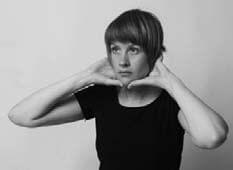
Relaxing of oblique muscles of the head
Relaxing of oblique muscles of the head helps to relieve severe shooting pains in the neck (with one hand). This condition is often confused with headaches, in fact it occurs due to compression of the occipital nerve spasserovannye oblique muscles of the head.
I. p. – sitting.
The palm of one hand mounted on the lower jaw, the fingers back and a second hand cover your head and exert pressure on the head. With the head tilted maximally to the side.
On the exhale, which lasts from 5-7, and during a breath hold, which lasts 3-5 seconds, pressure is carried out.
On the inhale position of the head is fixed.

Relaxation of the extensors of the head and neck
It is possible to check the condition of the extensors of the head and neck.
For this we need to sit down and try to get the chin to the chest.
If this does not work or you have any unpleasant, painful sensation in the cervical muscles, so they spasmatic and need relaxation.
Relaxation of the extensors of the head and neck helps to relieve numbness, pain and numb in the neck.
Also these exercises help to relieve muscle tension, improve blood circulation in the cervical spine, which leads to an improvement of the cardiovascular system.
I. p. – sitting.
Hands must be put on the back of the head and hook to the "castle".
Then the head is tilted to front as long as possible, and at this stage the movement is fixed.
Now it is necessary to direct your gaze upwards and breathe slowly.
Then breathe in for 3-4 seconds, then gaze is directed downwards, and slowly, over 6-7 with exhale air, accompanying exhale a gentle pressure with your hands on your head.
Do this exercise 2 times.

Relaxation of short rotators of a neck
If you find it difficult to turn his head to one side or the other, or you are experiencing this pain, you should do the exercise for relaxation of short rotators of a neck.
Exercise is especially recommended to people engaged in sedentary work in which sight is fixed at one point. To do this exercise is necessary every half hour.
Exercise for relaxation of short rotators of a neck it is better to do in front of a mirror to control the absence of head tilt.
I. p. – sitting.
The head turn to the painful side.
If you make a right turn, the right hand take yourself for the chin. While the left hand hold onto the seat.
Then transfer your gaze to the side opposite to the point where the head is rotated (in the case of turning the head from side view is translated to the left), while slowly breathing in air for 5-6 C.
Then hold your breath for 2-3 s.
All this time your right hand should hold the head from turning back.
Then slowly exhale, look translate to the left.
Doing the exercise 3 times.

Relaxation of the sternocleidomastoid muscle
The mastoid muscle is easy to palpate. Attach the index and middle fingers behind the ear and Sokolnice them down the neck to the collarbone. The fingers clearly feel the muscle roller, which is the sternocleidomastoid muscle. This muscle is clearly visible.
I. p. – lying on his back on the couch, and the head is over the edge of the bed. One hand is placed on the clavicle from the stretched muscles and exerts pressure on her bottom.
Other hand produces rotation of the head in a healthy direction at 45° and tilts her back, reaching muscle tension.
After is long-term, for 5-7, breath, head held in a fixed position, followed by breath holding for 2-3, and on the exhale the head of your weight relaxes the sternocleidomastoid muscle (thus the head hangs down).
Exercise repeat 3 times.

Exercises that give you the opportunity to relax the muscles of the neck, is an important component of the treatment of various disorders in the cervical spine, leading to headaches and, in some cases, to hypertension.published
"Physiotherapy of joints and spine", V. L. Rudnitsky, L. Rudnitskaya
The materials are for informational purposes. Remember, self-life-threatening, for advice regarding the use of any medicines and methods of treatment, contact your doctor.
P. S. And remember, only by changing their consumption — together we change the world! ©
Source: //vk.com/massage_ru?w=wall-23903469_12999
The following techniques will help you:
- to get rid of the dizziness,
- remove the pressure,
- to improve hearing and vision.

You must understand that because the holes of the lateral processes of the vertebrae are the cervical vertebral arteries supply posterior brain, with a sharp and sloppy turning the neck there is the possibility of damage.
In the upper part of the neck is the medulla oblongata responsible for breathing and heart activity, so any action on the first and second cervical vertebrae should be as gentle.
So all the exercises, employing the cervical spine, it is necessary to smoothly and slowly, in any case, not forcing the pace, with the maximum caution and care.
In fact, the proposed exercises will help you to get rid of the root cause of headaches, dizziness, high blood pressure, namely from the functional biomechanical disorders in the upper spine.

I must say that more than half of the cases of persistent and severe headache occurs in various disorders of the cervical spine. The symptoms of cervical headaches are the result of irritation of the sympathetic the spinal nerve which often leads to sharp pain in the right or left side of the head.
I want to note that nerve fibers from the second cervical vertebra go straight to the brain stem that leads to the occurrence of cardiovascular disorders on the background of the headaches "cervical" character. So the treatment for this type of headache is the treatment and prevention of cardiovascular disorders.
Before proceeding to vascular gymnastics of the upper spine, I suggest you to determine the strength of the blood flow in the vertebral arteries.
- For this you need to lie on the couch on his back, so the head was at the edge of the bed.
- Now to the limit, tilt the head back and stay in this position for 30 s.

- Then turn your head to the right, again, the most lean it back and count off 15 seconds.
- In conclusion, complete this exercise with your head turned to the left.

If during this exercise you experience a headache, you feel dizzy, appeared "floaters" or spots before the eyes, it means that there is obstruction of blood flow in vertebral arteries. In this case, I do not advise you to do exercises on the upper spine. You can use the exercises for muscle relaxation.
I want to draw your attention that in case of any discomfort, whether it is neck pain, headache, dizziness, or the appearance of spots before eyes, exercise should cease immediately, because these sensations may indicate tissue damage of the cervical spine or of violations of blood flow in the vertebral arteries.
However, you should not finish abruptly, otherwise it will cause reflex spasm of the neck muscles and may worsen the condition.
When the complaints must gradually, within 3-5 seconds to reduce the tensile stress on the neck, gradually reducing it to zero.
The most simple and universal method of influence on the cervical spine are stretching and rhythmic movements.
Their benefits consist of two components:
1) simple technique, not requiring extensive training;
2) the performance of this type of exercises: they allow you to get the results after conducting 3-4 treatments.
The effect on the muscles of the cervical head neck Muscle responsible for turning, flexion and extension of the head and neck. Most often, spasserovannye the muscles of the neck seal is evident and pain in cervical myositis, blocking the first and second cervical vertebrae. Spasserovannye of the neck muscles occurs more often in those engaged in sedentary work. Muscles need to learn to relax.
Relaxing of direct muscles of a head
Relaxing of direct muscles of the head used for the treatment of headaches and pain in the neck.
I. p. – sitting.
You take in hands the head, while the thumbs of the hands put on your chin and the fingers come with a fan at the back, then slightly bend your head forward.
When this movement need to look up and deeply and slowly inhale. And very importantly, during inhalation, you need arms to resist tilting your head back.
After the inhalation hold your breath for 3-5 seconds, shift your gaze down and take a deep slow exhale.
The tilt of the head will be more accurately described as a nod, because this movement is not due to the cervical spine, but only at the expense verhnesheynye vertebrae.

Relaxing of oblique muscles of the head
Relaxing of oblique muscles of the head helps to relieve severe shooting pains in the neck (with one hand). This condition is often confused with headaches, in fact it occurs due to compression of the occipital nerve spasserovannye oblique muscles of the head.
I. p. – sitting.
The palm of one hand mounted on the lower jaw, the fingers back and a second hand cover your head and exert pressure on the head. With the head tilted maximally to the side.
On the exhale, which lasts from 5-7, and during a breath hold, which lasts 3-5 seconds, pressure is carried out.
On the inhale position of the head is fixed.

Relaxation of the extensors of the head and neck
It is possible to check the condition of the extensors of the head and neck.
For this we need to sit down and try to get the chin to the chest.
If this does not work or you have any unpleasant, painful sensation in the cervical muscles, so they spasmatic and need relaxation.
Relaxation of the extensors of the head and neck helps to relieve numbness, pain and numb in the neck.
Also these exercises help to relieve muscle tension, improve blood circulation in the cervical spine, which leads to an improvement of the cardiovascular system.
I. p. – sitting.
Hands must be put on the back of the head and hook to the "castle".
Then the head is tilted to front as long as possible, and at this stage the movement is fixed.
Now it is necessary to direct your gaze upwards and breathe slowly.
Then breathe in for 3-4 seconds, then gaze is directed downwards, and slowly, over 6-7 with exhale air, accompanying exhale a gentle pressure with your hands on your head.
Do this exercise 2 times.

Relaxation of short rotators of a neck
If you find it difficult to turn his head to one side or the other, or you are experiencing this pain, you should do the exercise for relaxation of short rotators of a neck.
Exercise is especially recommended to people engaged in sedentary work in which sight is fixed at one point. To do this exercise is necessary every half hour.
Exercise for relaxation of short rotators of a neck it is better to do in front of a mirror to control the absence of head tilt.
I. p. – sitting.
The head turn to the painful side.
If you make a right turn, the right hand take yourself for the chin. While the left hand hold onto the seat.
Then transfer your gaze to the side opposite to the point where the head is rotated (in the case of turning the head from side view is translated to the left), while slowly breathing in air for 5-6 C.
Then hold your breath for 2-3 s.
All this time your right hand should hold the head from turning back.
Then slowly exhale, look translate to the left.
Doing the exercise 3 times.

Relaxation of the sternocleidomastoid muscle
The mastoid muscle is easy to palpate. Attach the index and middle fingers behind the ear and Sokolnice them down the neck to the collarbone. The fingers clearly feel the muscle roller, which is the sternocleidomastoid muscle. This muscle is clearly visible.
I. p. – lying on his back on the couch, and the head is over the edge of the bed. One hand is placed on the clavicle from the stretched muscles and exerts pressure on her bottom.
Other hand produces rotation of the head in a healthy direction at 45° and tilts her back, reaching muscle tension.
After is long-term, for 5-7, breath, head held in a fixed position, followed by breath holding for 2-3, and on the exhale the head of your weight relaxes the sternocleidomastoid muscle (thus the head hangs down).
Exercise repeat 3 times.

Exercises that give you the opportunity to relax the muscles of the neck, is an important component of the treatment of various disorders in the cervical spine, leading to headaches and, in some cases, to hypertension.published
"Physiotherapy of joints and spine", V. L. Rudnitsky, L. Rudnitskaya
The materials are for informational purposes. Remember, self-life-threatening, for advice regarding the use of any medicines and methods of treatment, contact your doctor.
P. S. And remember, only by changing their consumption — together we change the world! ©
Source: //vk.com/massage_ru?w=wall-23903469_12999
Gary Chapman: the Key to language of love your child
Ulrich Boser: People underestimate how much they forget
